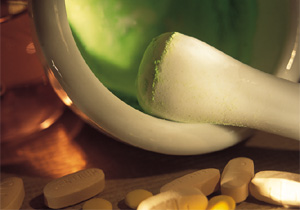Materia Medica - Important
Disclaimer
The information that is available at or
through this site is not intended directly
or by implication to either diagnose or
treat any medical, emotional, or
psychological condition or disorder. It
is always recommended that consultation
with local health care providers be
obtained for specific health or medical
concerns.
Pharmaceutical Name

Radix Astragali
Botanical Name

1. Astragalus membranaceus (Fisch.) Bge.; 2. Astragalus membranaceus Bge. var. mongolicus (Bge.) Hsiao
Common Name

Astragalus root
Source of Earliest Record

Shennong Bencao Jing
Part Used & Method for Pharmaceutical Preparations

The four year old roots are dug in spring or autumn, but autumn ones are of better quality. After the fibrous roots are removed, the roots are dried in the sun, soaked again in water and cut into slices.
Properties & Taste

Sweet and slightly warm
Meridians

Spleen and lung
Functions

1. To replenish qi and cause yang to ascend; 2. To benefit qi and stabilize the exterior; 3. To release toxins and promote healing; 4. To promote water metabolism and reduce edema
Indications & Combinations

1. Deficient qi of the spleen and lungs manifested as poor appetite, loose stool, shortness of breath and lassitude. Astragalus root (Huangqi) is used with Ginseng (Renshen) and White atractylodes (Baizhu).
2. Deficient qi and weakened yang manifested as chills and sweating. Astragalus root (Huangqi) is used with Prepared aconite root (Fuzi).
3. Qi sinking in the middle jiao due to weakness of the spleen and stomach manifested as prolapsed anus, prolapsed uterus and gastroptosis. Astragalus root (Huangqi) is used with Ginseng (Renshen), White atractylodes (Baizhu) and Cimicifuga rhizome (Shengma) in the formula Buzhong Yiqi Tang.
4. Failure of deficient qi of the spleen in controlling blood manifested as blood in the stool and uterine bleeding. Astragalus root (Huangqi) is used with Ginseng (Renshen) and Chinese angelica root (Danggui) in the formula Guipi Tang.
5. Deficiency of qi and blood manifested as palpitations, anxiety, insomnia and forgetfulness. Astragalus root (Huangqi) is used with Longan aril (Longyanrou), Wild jujube seed (Suanzaoren) and Polygala root (Yuanzhi) in the formula Guipi Tang.
6. Spontaneous sweating due to exterior deficiency. Astragalus root (Huangqi) is used with Oyster shell (Muli), Light wheat (Fuxiaomai) and Ephedra root (Mahuanggen) in the formula Muli San.
7. Night sweating due to yin deficiency and excessive fire. Astragalus root (Huangqi) is used with Fresh rehmannia root (Shengdihuang) and Phellodendron bark (Huangbai) in the formula Danggui Liuhuang Tang.
8. Deficiency of the spleen leading to dysfunction in transportation and transformation of water manifested as edema and scanty urine. Astragalus root (Huangqi) is used with Tetrandra root (Fangji) and White atractylodes (Baizhu) in the formula Fangji Huangqi Tang.
9. Boils and ulcers due to qi and blood deficiency manifested as sores that have formed pus but have not drained or healed well. Astragalus root (Huangqi) is used with Cinnamon bark (Rougui), Chinese angelica root (Danggui) and Ginseng (Renshen).
10. Retardation of circulation of the blood due to deficiency of qi and blood manifested as hemiplegia. Astragalus root (Huangqi) is used with Chinese angelica root (Danggui), Chuanxiong rhizome (Chuanxiong) and Earthworm (Dilong) in the formula Buyang Huanwu Tang.
Dosage

10-15 g (The maximum dosage can be 30-60 g.)
Cautions & Contraindications

This herb is contraindicated during yin deficiency and hyperactivity of yang, qi stagnation and accumulation of dampness, retention of food, exterior excess syndrome, and the early stage of carbuncles and furuncles.
Back
to Materia Medica
| 
 This website is published, edited and designed by Raymond Cheng,
and reflects only and only his personal views and opinions in his individual capacity.
The information available at this website is not intended
directly or by implication to either diagnose or treat any
medical, emotional, or psychological condition or disorder.
It is also not intended to create a physician-patient relationship
between you and I or between you and Wyith Institute™ and The Office of Dr Raymond K K Cheng.
The information here is not a substitute for advice and treatment provided
by your physician or by another healthcare professional.
It is always recommended that consultation with local healthcare providers
be obtained for any of your specific health or medical concerns.
Furthermore, any products that can be purchased (yet you can see I don't have much
to sell here) through advertisers' banners or through links to other websites
are not either explicitly or implicitly given any warranty or endorsement
by me, my colleagues, Wyith Institute™ or any of its associated businesses.
This website is published, edited and designed by Raymond Cheng,
and reflects only and only his personal views and opinions in his individual capacity.
The information available at this website is not intended
directly or by implication to either diagnose or treat any
medical, emotional, or psychological condition or disorder.
It is also not intended to create a physician-patient relationship
between you and I or between you and Wyith Institute™ and The Office of Dr Raymond K K Cheng.
The information here is not a substitute for advice and treatment provided
by your physician or by another healthcare professional.
It is always recommended that consultation with local healthcare providers
be obtained for any of your specific health or medical concerns.
Furthermore, any products that can be purchased (yet you can see I don't have much
to sell here) through advertisers' banners or through links to other websites
are not either explicitly or implicitly given any warranty or endorsement
by me, my colleagues, Wyith Institute™ or any of its associated businesses.



 Thank you for visiting this TCM and acupuncture information website.
If you have previously been to this website, you might have
noticed that some of the pages on ancient historical ideas and
holistic thinkings related to Chinese metaphysics are temporarily taken offline.
This is because I will be revamping the whole website and be moving
those information into a new \"Ancient Chinese Culture\" section
so as to reflect a more current perspective on the interpretation
of some of the fundamental concepts as well as to include
some of the latest information in the area.
But if you have just found this website for the very first time, I welcome you again and
wish you could find what you require and, hopefully, you could also be benefitted
from reading the articles I published on this website.
Thank you for visiting this TCM and acupuncture information website.
If you have previously been to this website, you might have
noticed that some of the pages on ancient historical ideas and
holistic thinkings related to Chinese metaphysics are temporarily taken offline.
This is because I will be revamping the whole website and be moving
those information into a new \"Ancient Chinese Culture\" section
so as to reflect a more current perspective on the interpretation
of some of the fundamental concepts as well as to include
some of the latest information in the area.
But if you have just found this website for the very first time, I welcome you again and
wish you could find what you require and, hopefully, you could also be benefitted
from reading the articles I published on this website.